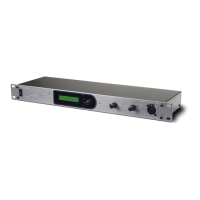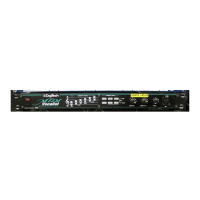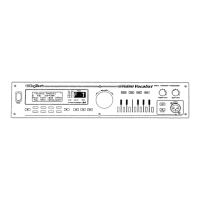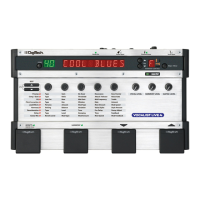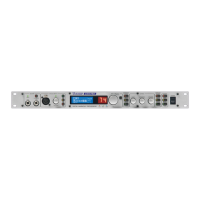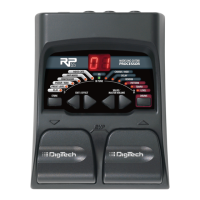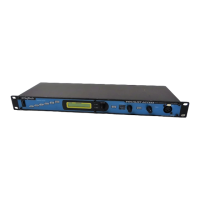24
BIGVERB / MFX REVERB Bigverb is the flagship reverb Module of the Valve FX. It contains 14
Parameters, giving exceptional soundfield and tonal shaping control
over reverberation. Bigverb is capable of producing reverberation of
virtually any size, shape, depth, timbre or soundfield location.
MFX Reverb is a slightly trimmed version of the Bigverb, offering much
of the same flexibility and controls as Bigverb, but in less memory
space. MFX Reverb allows you to achieve high-quality reverb in con-
junction with other effects.
Before covering all the reverb Parameters and their definitions in
detail, however, let’s discuss the benefits and theory behind reverber-
ation Algorithms.
Ambience, or reverberation, is produced when sound energy is
reflected off room surfaces and objects. Using reverberation in
recorded program material gives the listener a sense that the material
is being performed in an actual room or hall. It is this similarity to
actual acoustic spaces that makes reverberation a useful tool in
recorded music.
The length of the reverberation, or reverb time, can be perceived by
the listener and is useful during the course of continuous program
material (reverb time is defined as “the length of time the reverbera-
tion takes to decay to inaudibility”, or -60 dB). Studies have shown
that the character of reverberation depends heavily upon the initial
buildup and decay of the reverberation reflections.
The Valve FX uses early reflections to better emulate the natural
sound of a hall. Early reflections are short clusters of direct reflections
from the closest room walls. In an average size hall, these direct
reflections usually occur within the first 30 to 100 milliseconds,
depending on the size of the room and the placement of the sound
source within the room. Adding these early reflections to the rever-
beration increases the perceived reverberation time and the apparent
size of the reverberant space, but adding more than small amounts
tends to make the reverb sound unnatural.

